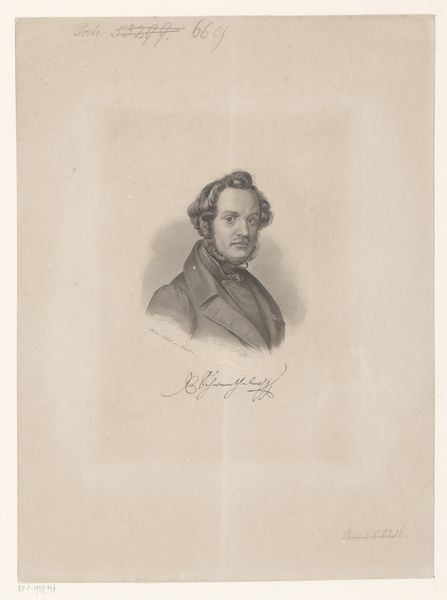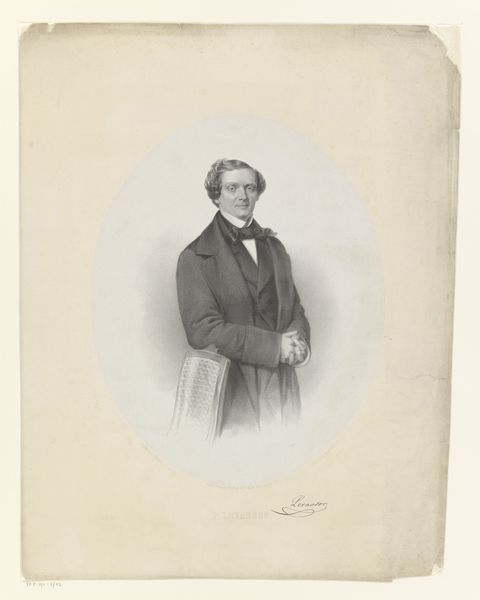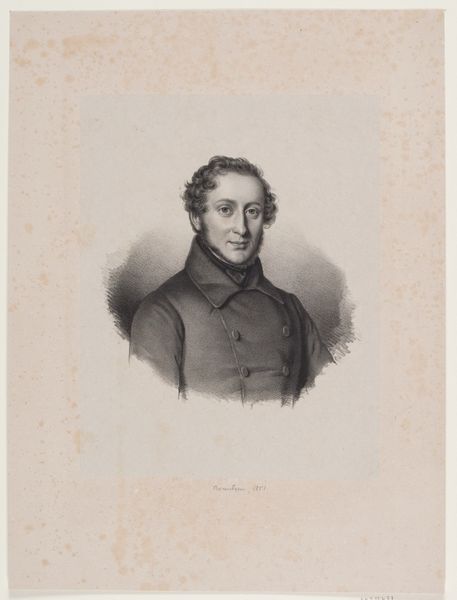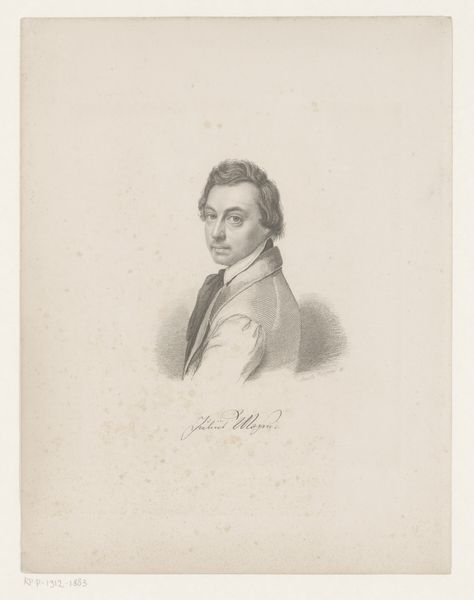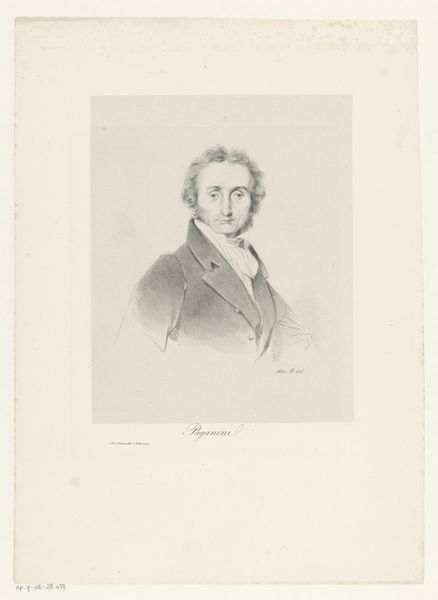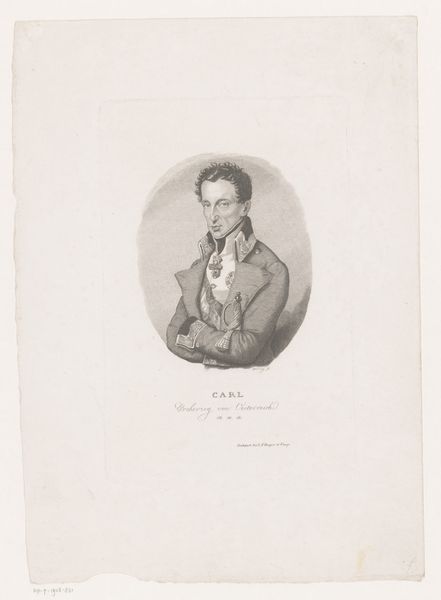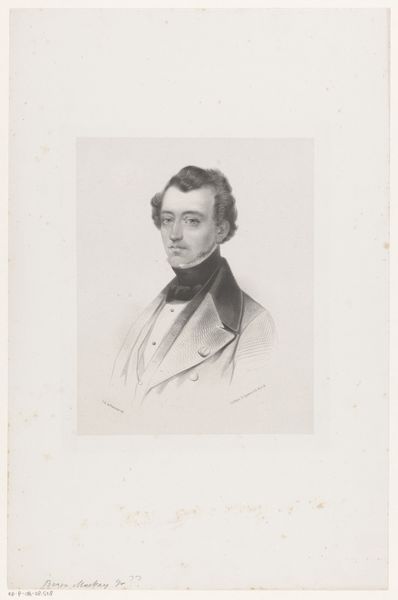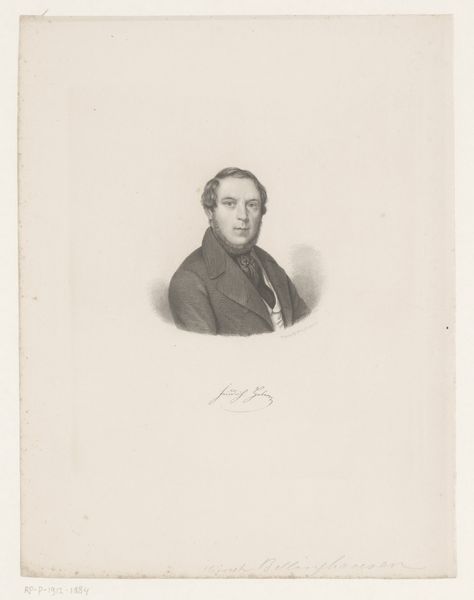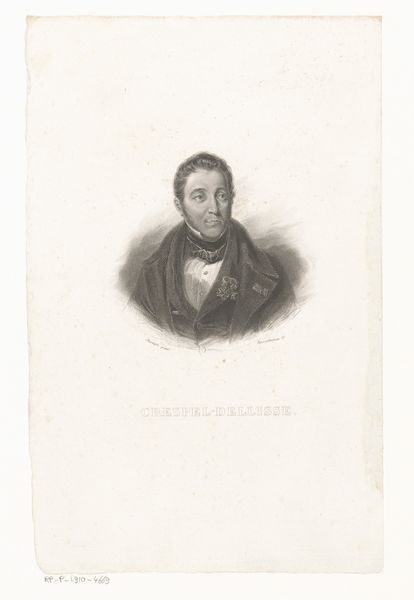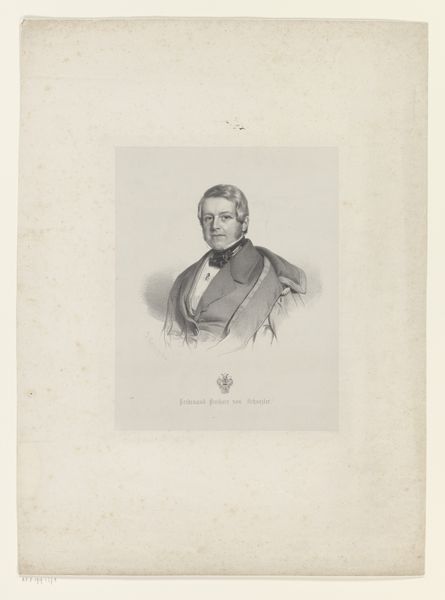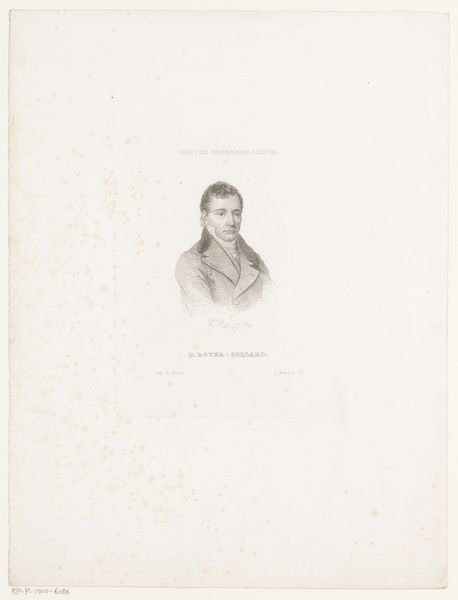
lithograph
#
lithograph
#
romanticism
#
academic-art
Dimensions: height 340 mm, width 265 mm, height 490 mm, width 395 mm
Copyright: Rijks Museum: Open Domain
Editor: Here we have Petrus Franciscus Greive’s "Portret van Willem Pasques de Chavonnes Vrugt," a lithograph created sometime between 1821 and 1871. It feels…restrained. The gray tones and simple composition project a formal mood. What strikes you about the artwork? Curator: Note how the tonality, achieved through the lithographic process, produces a study in contrasts. Light and shadow model the figure, giving it a sculptural quality, but without harshness. Observe the sitter's gaze, directed at the viewer, a strategy to establish connection, yet rendered at a slight remove. Is this a commentary on individual psychology and perception? Editor: You're focusing on the formal relationships of the sitter, light, and shadow. It almost becomes less about him as a person, and more about these abstract concepts? Curator: Precisely. The semiotics here – the artistic language - are more critical than narrative content. While the man may have been a prominent individual, Greive is concerned with the aesthetic impact of this work. Editor: I see. The gaze and tonality create an engagement with the viewer while maintaining a psychological distance through composition and restraint. Is there any intention behind that visual device? Curator: The academic training evident in the execution suggests an exploration of both Romantic and Neoclassical traditions, and the sitter becomes a symbol. Perhaps he stands as a stoic exemplar of Dutch society. Editor: Thinking about how the sitter's presentation reflects both artistic expression and an exemplar of Dutch society reveals interesting tensions in the work. Thank you. Curator: And to consider that such a likeness depends upon aesthetic choices— the contrasts between tones, as well as the nature of directed, yet psychologically distant gaze. Illuminating, wouldn’t you agree?
Comments
No comments
Be the first to comment and join the conversation on the ultimate creative platform.
